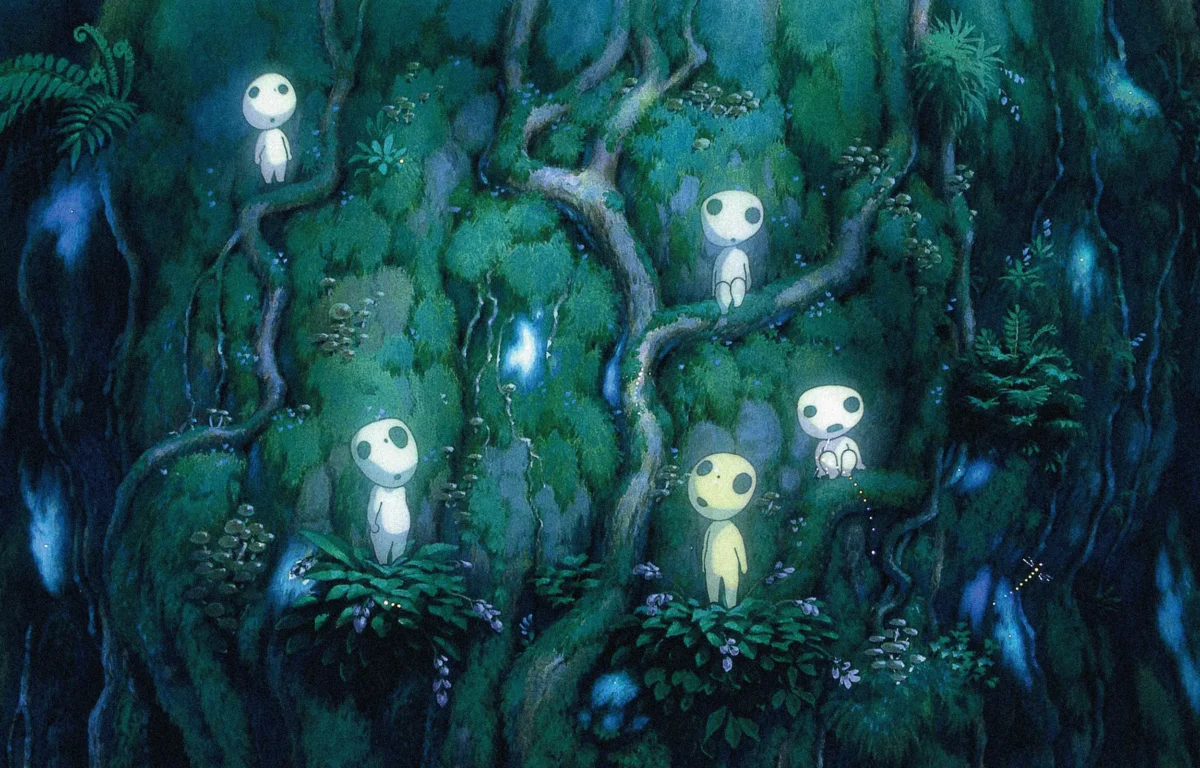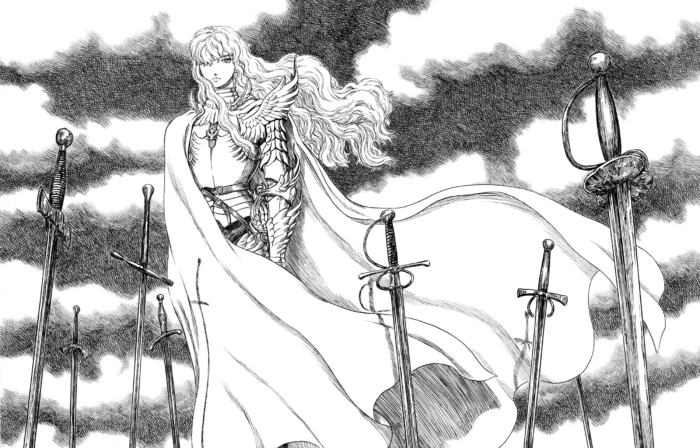San and the wolf gods (Princess Mononoke)In the world of animated cinema, few films match the depth, beauty, and cultural richness of Studio Ghibli’s Princess Mononoke. Directed by the legendary Hayao Miyazaki, this cinematic gem is a masterclass in storytelling, animation, and thematic complexity. At its core lies an exploration of the delicate balance between humanity and nature, which is a theme deeply ingrained in Japanese folklore and mythology.
San (Princess Mononoke)
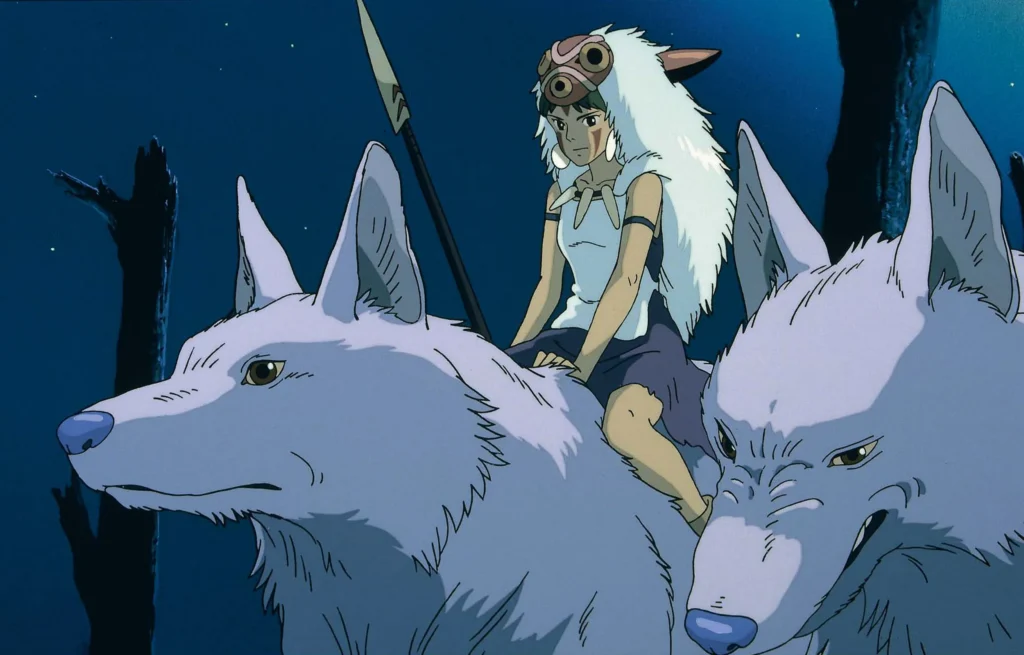
San and the wolf gods (Princess Mononoke)
San, also known as Princess Mononoke is raised by wolves and fiercely protective of her forest home. Her character draws from various elements of Japanese mythology, particularly the archetype of the yokai, supernatural beings that inhabit the natural world. In Shinto belief, certain individuals are believed to possess the ability to communicate with animals and even transform into animal-like beings themselves. San’s connection to the natural world reflects this belief as she embodies the primal energy of the forest and is determined to protect it at all costs.
The Forest Spirit (Shishigami)
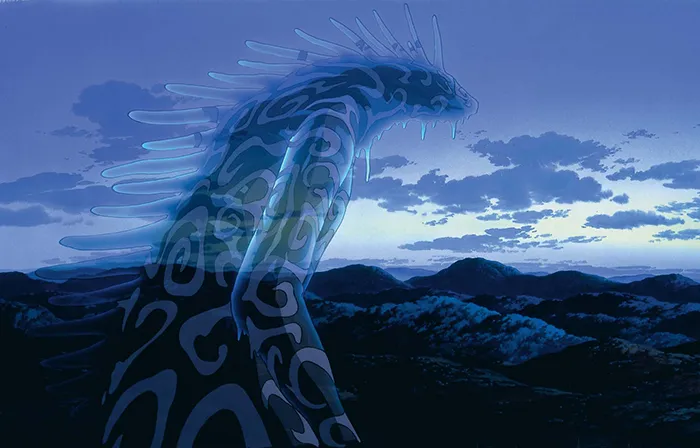
The Forest Spirit (Princess Mononoke)
One of the most mysterious beings we’re introduced to in Princess Mononoke is the Forest Spirit, also known as Shishigami. This divine entity represents the essence of kami, the sacred spirits revered in Shinto belief. The Forest Spirit is depicted as a majestic and otherworldly being, embodying the very soul of the natural world. It maintains the delicate balance between humanity and nature and it’s presence casts a mystical spell over the forests, evoking awe and reverence in both characters and viewers alike.
The Forest Spirit draws heavily from the deep Japanese respect for nature and the belief in divine beings dwelling in the natural realm. According to Shinto tradition, kami reside within natural phenomena like mountains, rivers, and forests, serving as guardians of the land. Likewise, the Forest Spirit embodies this reverence for nature, emphasizing the interconnectedness of all living things and the importance of living harmoniously with our environment.
Kodama: Guardians of the Forest
Adding to the enchantment of the forest are the Kodama, ethereal tree spirits tasked with protecting the natural world. These playful creatures, with their glowing eyes and mischievous demeanor, bring a sense of wonder to the forest setting. Similarly, Japanese folklore Kodama are believed to inhabit sacred trees and forests, blessing those who honor the natural world and punishing those who desecrate it.
The Boar God
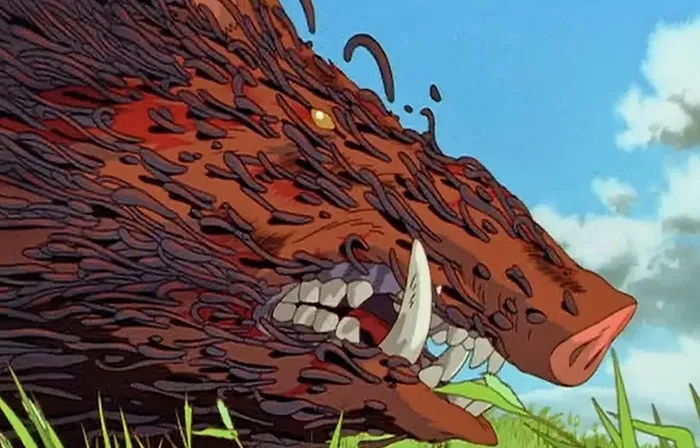
Okkoto (Princess Mononoke)
Okkoto, the powerful Boar God who leads his tribe in a struggle against humanity, embodies the wrath of nature unleashed upon those who disrupt its harmony. His tragic transformation into a demon serves as a cautionary tale, highlighting the consequences of human greed and disrespect for the environment.
Okkoto’s character draws inspiration from various elements of Japanese folklore, particularly the reverence for animals and the belief in animal spirits inhabiting the natural world. According to Shinto belief, animals are often regarded as messengers of the gods and are revered for their connection to the divine. Okkoto’s transformation reflects the spiritual corruption that occurs when humanity disregards its bond with nature, a recurring theme in Japanese folklore.
Jiko-bo: The Wise Monk
Amidst the conflict between humanity and nature stands Jiko-bo, a wise monk who offers cryptic wisdom to those he encounters. The archetype of the wandering monk is a common figure in Japanese folklore and literature, known as yamabushi. Yamabushi were believed to possess supernatural powers and knowledge of the natural world. They serve as guardians of ancient wisdom and spiritual guidance. Likewise, Jiko-bo guides the characters on their journey and impart lessons about the importance of respecting the balance of nature in a world torn apart by conflict and greed.
The Ironworks and Industry
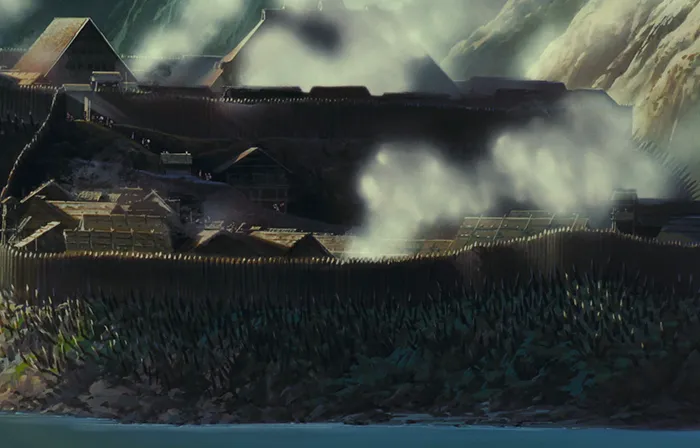
Irontown (Princess Mononoke)
In stark contrast to the natural world stands Irontown, the result of humanity’s ruthless industry and progress. The conflict between nature and industry is a central theme in the movie and reflects contemporary concerns about environmental degradation and the consequences of human expansion that threatens the delicate balance that sustains life.
In traditional Japanese mythology, the spirits of nature, known as kami, wield immense power and influence over the world. In short, Irontown symbolizes humanity’s disregard for the balance of nature.
The Spirit Realm and Supernatural Phenomena
The inclusion of supernatural elements in Princess Mononoke reflects the rich tradition of Japanese folklore, where the spirit realm coexists alongside the human world. In Japanese mythology, spirits and supernatural beings inhabit the natural world, influencing human events and serving as guardians of the land.
Princess Mononoke is a testament to the enduring power of Japanese folklore in contemporary storytelling. Through its rich tapestry of mythical creatures, divine spirits, and timeless themes, the film invites viewers on a journey into the heart of Japanese mythology, where the lines between reality and fantasy blur, and the spirit of nature reigns supreme.

